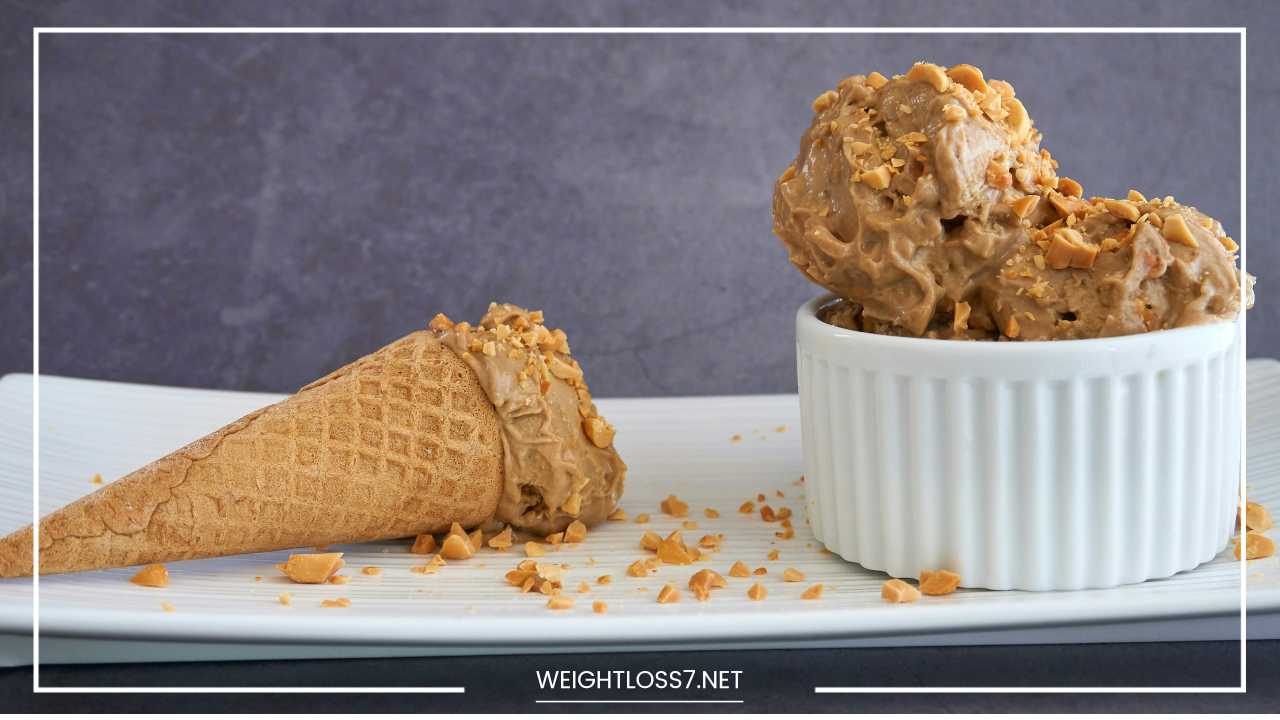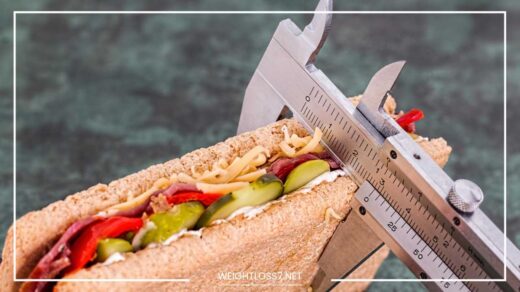Eating Gluten-Free: Beyond the Basics

Eating Gluten-Free
Embracing Delicious: Your Guide to a Thriving Gluten-Free Lifestyle
Whether you’ve just received a celiac disease diagnosis, suspect gluten sensitivity, or simply want to explore a healthier lifestyle, welcome to the vibrant world of gluten-free eating!
This comprehensive guide dispels myths, equips you with practical tips, and most importantly, demonstrates the delicious possibilities of a gluten-free diet.
Understanding Gluten: The Invisible Foe
Gluten is a protein complex found in grains like wheat, barley, and rye. It acts as a glue, providing structure to bread and elasticity to dough.
However, for individuals with celiac disease, an autoimmune disorder, gluten triggers an immune response that damages the small intestine. This can lead to a range of digestive issues and nutrient deficiencies.
People with non-celiac gluten sensitivity (NCGS) also experience negative reactions to gluten, but without the intestinal damage associated with celiac disease. Symptoms of NCGS can vary greatly, including bloating, gas, fatigue, headaches, and brain fog.
Embarking on the Gluten-Free Journey: What to Expect
A gluten-free diet involves eliminating foods containing wheat, barley, rye, and sometimes oats (depending on the level of sensitivity). Here’s a breakdown of what to avoid:
- Grains: Wheat (bread, pasta, couscous, bulgur), barley, rye, spelt
- Baked Goods: Cakes, cookies, pastries, muffins (unless made with certified gluten-free flour blends)
- Hidden Gluten Culprits: Many processed foods contain hidden gluten, so be vigilant. Examples include soy sauce, salad dressings, processed meats, condiments, broths, and even seemingly innocuous items like candy and medications. Always read labels carefully.
- Beverages: Beer, some flavored malt beverages, and certain commercially brewed coffees (due to potential cross-contamination during processing).
A World of Delicious Possibilities: Embracing Gluten-Free Staples
Going gluten-free doesn’t mean sacrificing variety. Here’s a treasure trove of naturally gluten-free options to explore:
- Grains: Oats (certified gluten-free), quinoa, brown rice, millet, sorghum, corn, teff, buckwheat, and even ancient grains like chia and amaranth.
- Proteins: Meat, poultry, fish, seafood, a vast array of beans and lentils, tofu, tempeh, and all types of nuts and seeds.
- Fruits and Vegetables: The entire spectrum of fresh, frozen, and canned fruits and vegetables are naturally gluten-free.
- Dairy: Milk, cheese, yogurt (be mindful of added thickeners like wheat starch).
- Fats and Oils: Olive oil, avocado oil, coconut oil, vegetable oil, and nut-based oils like sesame oil or walnut oil.
Building a Well-Stocked Gluten-Free Pantry:
Having these essentials on hand will make creating delicious gluten-free meals a breeze:
- Gluten-Free Flour Blends: Replace wheat flour with commercially available blends that mimic its texture in baking. Choose blends that fit your dietary needs (some may contain oats, nuts, or other allergens). Popular options include almond flour, coconut flour, tapioca flour, chickpea flour, and various blends formulated for specific baking purposes (bread flour, pastry flour, etc.).
- Psyllium Husk and Xanthan Gum: These thickening agents play a crucial role in gluten-free baking. Psyllium husk provides structure and binding, while xanthan gum helps baked goods rise and maintain their shape.
- Gluten-Free Pasta and Bread: Many brands offer delicious alternatives that are indistinguishable from their gluten-containing counterparts. Explore options made from corn, rice, quinoa, or legumes.
- Staples Like Rice, Quinoa, and Beans: These versatile ingredients form the base of countless gluten-free dishes and provide essential nutrients like protein, fiber, and complex carbohydrates.
Decoding Food Labels: Your Guide to Gluten-Free Savvy
Understanding food labels is paramount for a safe and successful gluten-free journey. Here’s what to look for:
- The Golden Standard: “Gluten-Free” Label: Look for the official “Gluten-Free” label from a certified agency like the Celiac Disease Foundation or the Gluten Intolerance Group (GIG). This ensures the product meets strict gluten-free standards (typically less than 20 parts per million of gluten).
- Ingredient List Scrutiny: Scan the ingredients list for any mention of wheat, barley, rye, and oats. Be cautious of hidden gluten sources like malt, modified wheat starch, hydrolyzed vegetable protein (HVP), and brewer’s yeast.
- “May Contain” Warnings: Manufacturers may include warnings about potential gluten cross-contamination during processing. Consider your sensitivity level when making decisions about these products. If you have celiac disease, it’s best to avoid products with “may contain” warnings. For NCGS, you might be able to tolerate them depending on the severity of your reaction.
Dining Out Gluten-Free: Confidence and Communication are Key
Eating out gluten-free can be daunting, but with a little preparation and clear communication, you can still enjoy a satisfying meal. Here are some tips:
- Research is Your Ally: Look for restaurants with menus that cater to gluten-free diets. Many restaurants offer dedicated gluten-free options or are willing to modify dishes. Online resources and restaurant websites can be a valuable source of information.
- The Power of a Phone Call: Don’t hesitate to call the restaurant beforehand to discuss your dietary restrictions and explore menu options with the chef or waitstaff. This allows them to prepare for your arrival and answer any questions you might have about ingredients and preparation methods.
- Specificity is Key: When ordering, clearly communicate your gluten-free needs and ask questions about ingredients, preparation methods, and potential cross-contamination risks in the kitchen. Don’t be afraid to inquire about substitutions or modifications to existing dishes.
- Always Have a Backup Plan: Carry gluten-free snacks in your bag, just in case restaurant options are limited. These can be homemade energy bars, nuts, fruits, or pre-packaged gluten-free granola bars or crackers.
Beyond Bland: Exploring the Delicious World of Gluten-Free Cuisine
A common misconception is that gluten-free food is bland and uninspired. Not anymore! The world of gluten-free cuisine is exploding with flavor and creativity. Here are some resources to inspire your meals:
- Gluten-Free Cookbooks and Websites: Explore the vast collection of cookbooks and websites dedicated to gluten-free recipes. These resources offer a wide range of options, from simple weeknight meals to elaborate culinary creations. Popular examples include America’s Test Kitchen Gluten-Free Cookbook, The How Can It Be Gluten-Free Cookbook, and websites like Cookie and Kate or Minimalist Baker.
- Gluten-Free Food Blogs and Social Media: Follow gluten-free food bloggers and social media accounts for endless inspiration. These platforms showcase innovative recipes, beautiful food photography, and helpful tips for navigating a gluten-free lifestyle.
- Get Creative in the Kitchen: Don’t be afraid to experiment! Use naturally gluten-free ingredients to create your own unique dishes. Substitute gluten-free flours in traditional recipes, explore alternative grains like quinoa and brown rice, and discover the versatility of vegetables, legumes, and lean proteins.
Living a Fulfilling Life with Celiac Disease or Gluten Sensitivity
A gluten-free diet might seem restrictive at first, but it can be an empowering journey towards better health and well-being. Here are some additional tips for thriving on a gluten-free lifestyle:
- Join a Support Group: Connecting with others who understand your dietary restrictions can be incredibly beneficial. Support groups provide a safe space to share experiences, ask questions, and find encouragement. Look for online or in-person support groups in your area.
- Educate Yourself: Stay up-to-date on the latest research and developments related to celiac disease and gluten sensitivity. Resources like the Celiac Disease Foundation and the National Institute of Diabetes and Digestive and Kidney Diseases (NIDDK) offer valuable information.
- Focus on the Positive: Celebrate the positive changes you experience on a gluten-free diet. This could be increased energy levels, improved digestion, or clearer skin. Focus on how good you feel and the delicious food options available to you.
- Advocate for Yourself: Don’t be afraid to speak up for your needs in social settings, restaurants, or even at work. Educate those around you about celiac disease and gluten sensitivity, and politely request gluten-free options when needed.
Remember, a gluten-free lifestyle is a journey, not a destination. With the right information, resources, and a positive attitude, you can create a delicious and fulfilling life that thrives on health and flavor.
Beyond the Basics: Advanced Tips for a Thriving Gluten-Free Life
While the core principles of a gluten-free diet are well established, there’s always more to learn. Here’s a deeper dive into some advanced tips to elevate your gluten-free experience:
Gluten-Free Certifications: Understanding the Nuances
- Certification Levels: There are various levels of gluten-free certification. The most stringent, like the “Gluten-Free” label from the Celiac Disease Foundation, ensures less than 20 parts per million (ppm) of gluten. Others, like “Made with Gluten-Free Ingredients,” may allow for trace amounts (up to 100 ppm). Understanding these distinctions helps you make informed choices based on your sensitivity level.
- Cross-Contamination Concerns: Even certified products can have trace amounts of gluten due to shared processing facilities or equipment. If you have celiac disease, it’s best to prioritize products with certifications that address strict cross-contamination prevention measures.
Gluten-Free Travel: Packing Smart and Staying Safe
- Planning is Key: Research gluten-free options at your destination beforehand. Look for restaurants with dedicated menus, grocery stores with gluten-free sections, and accommodation options that cater to dietary restrictions. Pack some familiar gluten-free snacks and staples to ensure you have safe options on hand.
- Travel-Friendly Essentials: Invest in portable containers for packing snacks and meals. Consider a small travel rice cooker or steamer for easy preparation of gluten-free grains. Pack gluten-free condiments and travel-sized toiletries to avoid hidden gluten in unexpected places.
- Embrace Local Cuisine: While exploring new culinary experiences, prioritize naturally gluten-free options. Look for dishes made with fresh ingredients like fish, meat, vegetables, fruits, and legumes. Many ethnic cuisines like Thai, Vietnamese, or Indian offer naturally gluten-free selections with careful ingredient choices.
The Social Butterfly’s Guide to Gluten-Free Dining
- Communicate Early: When attending social gatherings, politely inform your host about your dietary restrictions in advance. Offer to bring a gluten-free dish to share, or suggest restaurants with gluten-free options.
- Become a Menu Detective: Don’t be afraid to ask questions at restaurants. Inquire about ingredients, preparation methods, and potential cross-contamination risks.
- Embrace Flexibility: Be prepared to adjust your expectations or offer to modify existing dishes. Your positive attitude and willingness to work with your host will go a long way.
Gluten-Free and Fitness: Fueling Your Active Lifestyle
- Choose Nutrient-Dense Options: Focus on gluten-free whole grains, lean proteins, fruits, vegetables, and healthy fats to ensure your body receives the nutrients it needs for optimal performance.
- Explore Gluten-Free Sports Nutrition Products: Many brands offer gluten-free protein powders, energy bars, and recovery drinks specifically formulated for athletes. Research and choose products that align with your dietary needs and fitness goals.
- Fueling for Workouts: Plan pre-workout and post-workout snacks that are both gluten-free and energy-boosting. Options like fruits with nut butter, gluten-free oatmeal with protein powder, or homemade rice cakes with avocado provide sustained energy.
The Emotional Journey of Going Gluten-Free: Addressing Challenges
- Coping with Social Situations: Navigating social gatherings and events can be tricky. Focus on enjoying the company and finding safe food options. Carry snacks or suggest restaurants in advance to ease the process.
- The Emotional Rollercoaster: Allow yourself to experience the range of emotions that come with dietary changes. There might be frustration, disappointment, or even grief at giving up familiar foods. Support groups and online communities can be invaluable resources during these times.
- Self-Care is Essential: Prioritize your well-being. Manage stress through activities you enjoy, like meditation, yoga, or spending time in nature. Taking care of your mental and emotional health is crucial for a successful gluten-free journey.
A Final Note: Embrace the Journey
Going gluten-free opens a world of possibilities. It’s a chance to explore new ingredients, discover delicious recipes, and prioritize your health.
With the right information, support, and a positive attitude, you can create a vibrant and fulfilling gluten-free life that thrives on flavor and well-being.

















